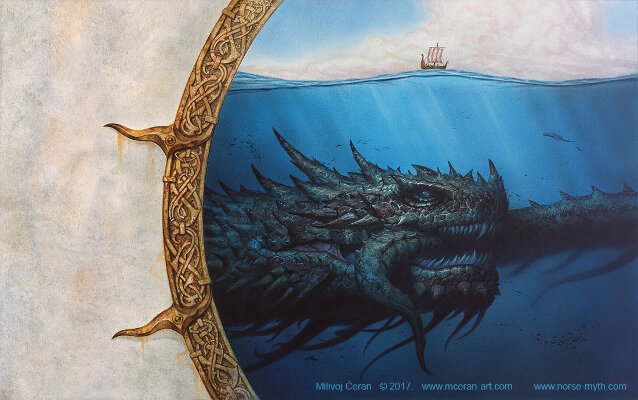Dragon Review - Long
It's time to review another dragon.
Possibly the BEST dragon.
That's a strong statement right out of the gate, yeah? But check it out: the Chinese dragon, or Long. Much like Ryu and Yong, the Long are scaled serpents with four legs, horns, and beards. They also symbolize luck, power and strength.
They're also OLD. Like, really old. Long are a huge deal in Chinese culture, showing up on all sorts of decoration going back as far as 4700 BC. Various imperial dynasties used it as their personal symbol, with display of the five-clawed Long being reserved for the emperor himself.
As long (hah) as we're on the basics, though, Long were also crazy magically powerful. They're known for not just having an affinity for water, but being able to control rain, typhoons, and floods. In art they're usually depicted holding a flaming pearl, called the Baozhu, one of the Eight Precious Treasures of Chinese art. It grants wishes. Dragon Ball Z apparently got this part correct. Also, they don't usually have wings, but can fly.
Now, I'm talking about generalities here. There's a whole slew of Long variants. Also, they're much like the Japanese ryu in that a lot of them are gods, or god-adjacent. Still, a couple of them stand out. Four of the most important are the Dragon Kings of the Sea. There were four of these guys, who each lived in and oversaw the seas of the four cardinal directions. Being kings AND gods, they had images to uphold. You don't wear those titles and go hang your hat in a pond, right? So the four dragon kings had massive, intricate crystal palaces they chilled in, along with fabulous treasures and whole armies of retainers.
As long (hah) as we're on the basics, though, Long were also crazy magically powerful. They're known for not just having an affinity for water, but being able to control rain, typhoons, and floods. In art they're usually depicted holding a flaming pearl, called the Baozhu, one of the Eight Precious Treasures of Chinese art. It grants wishes. Dragon Ball Z apparently got this part correct. Also, they don't usually have wings, but can fly. Now, I'm talking about generalities here. There's a whole slew of Long variants. Also, they're much like the Japanese ryu in that a lot of them are gods, or god-adjacent. Still, a couple of them stand out. Four of the most important are the Dragon Kings of the Sea. There were four of these guys, who each lived in and oversaw the seas of the four cardinal directions. Being kings AND gods, they had images to uphold. You don't tack those titles on and live in a ditch, right? So the four dragon kings had massive, intricate crystal palaces they chilled in, along with fabulous treasures and whole armies of retainers.
There aren't a ton of legends about the Dragon Kings themselves, because where do you go when you've already got the titles and the bling, right?
You go down, that's what. See, everything was fine for Ao Guang, the Dragon King of the East Sea. Until one day who happened to arrive but an extremely wet monkey by the name of Sun Wukong. Yes, THAT Sun Wukong. For those not in the know, Sun was like Norse God Loki and the Kool-Aid Man mashed into one person, then dosed with a healthy serving of pixie sticks AND cocaine. He was trouble, was what I'm saying.
Now, Sun Wukong had heard about the fabulous treasures of the Dragon Kings. Ao Guang thought to stop the strange simian, who had begun to wreck Ao Guang's armories in his search for a weapon of sufficient potency. He paused though, as his wife suggested he try the "brains over brawns" route in getting rid of Sun Wukong. Ao Guang went along and they offered up a staff that stood in the palace, the RUYI JINGU BANG. Which wasn't a staff so much as an insanely tall and heavy pillar that the Dragon King used to hold down the tides and keep them in order.
Unfortunately, Sun Wukong was only just getting started. He took up the staff, magically mastered it, and shrunk it down to size--all four tons of it. Ao Guang decided to use the OTHER brains over brawn, and recognizing skill (or at least serious trouble), congratulated Sun Wukong on his new weapon. And asked him to leave. Which Sun Wukong did, after extorting a whole panoply of loot out of the Dragon King.
So, where are we? Awesome design, huge cultural impact and influence, tons of magical power up to and including deity-hood. I'm a little disappointed, though. Now that I really look at it, there aren't a ton of specific really clear legends about Long-as-dragons. They're more of a background dragon, for the most part, unless they're also straight-up gods like Ao Guang. THEN they end up in stories and legends. Still, that does count. It's slightly less than my initial bold statement, but I think this dragon is worth a solid A-.








